 |
 |
 |
| |
HEPATITIS C RESURGENCE IN THE U.S: A DETAILED
STUDY OF INCIDENCE AND MORTALITY TRENDS (1990-2019)
|
| |
| |
DDW 2024 May 18-21 Wash DC
Dr. Chun-Wei Pan
Author(s): Chun-Wei Pan, Yichen Wang, Alejandro Nieto Dominguez, Gautam Maddineni, Yazan Abboud, Bashar M. Attar
DDW 05/18/2024
Download the PDF here
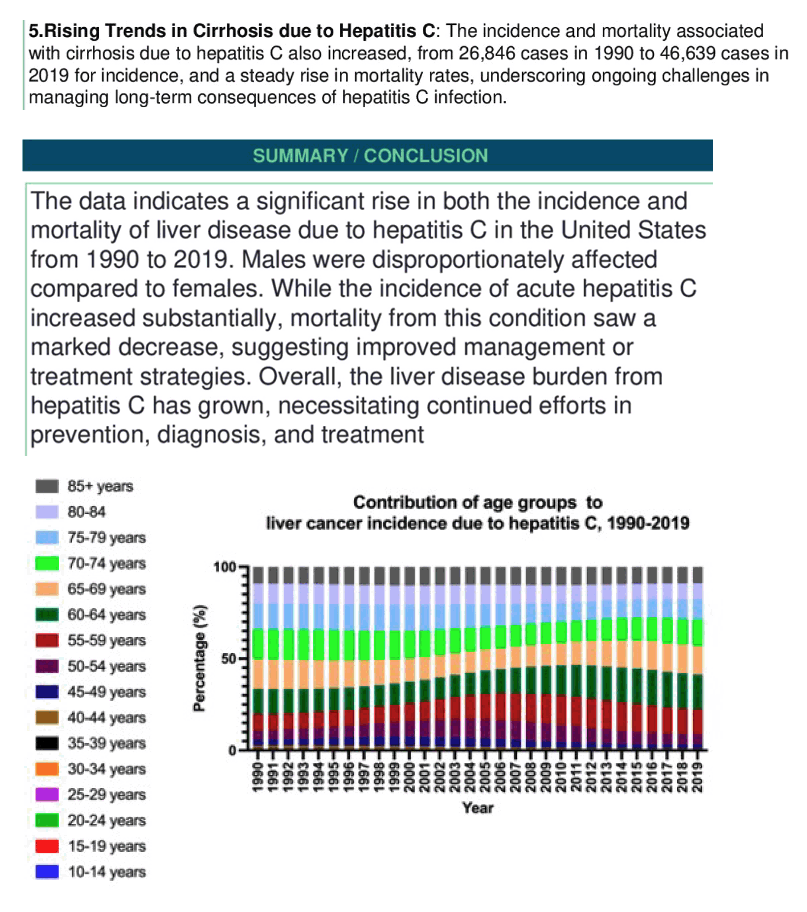
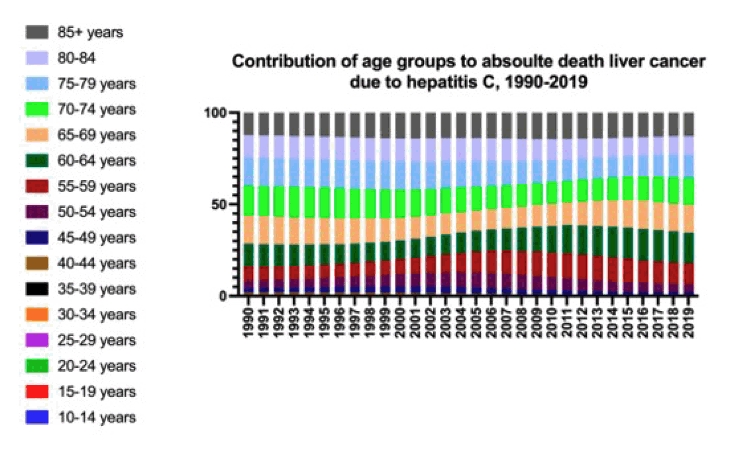
ABSTRACT
Introduction: The Hepatitis C virus (HCV), a leading bloodborne infection in the U.S., significantly affects liver health, contributing to high morbidity and mortality rates. Despite the availability of direct-acting antivirals, HCV incidence has tripled, partly due to unsafe injection practices in the opioid crisis, underscoring the need for updated infection estimates for effective policy-making. This study updates the trend of liver diseases due to HCV in the US.
Methods: We analyzed the 2019 Global Burden of Disease (GBD) study to assess the liver diseae related to HCV burden in the U.S., focusing on incidence numbers, age-standardized incidence, and mortality rates. Trends were evaluated across genders and age groups using Joinpoint regression, covering liver diseases due to HCV, including acute HCV, cirrhosis due to HCV, and liver cancer due to HCV.
Results: In 2019, the U.S. experienced a significant HCV-related liver disease burden. There were 230,090 new cases (95% CI: 192,418 to 273,934), a 58.24% increase from 1990 (145,407 cases). The age-standardized incidence rate (ASIR) in 2019 was 66.5 per 100,000 (95% CI: 56.3 to 78.7), with an Average Annual Percent Change (AAPC) in ASIR of 0.59% (CI: 0.56-0.61). The proportion of incidence cases due to acute hepatitis C was decreasing, while both cirrhosis and liver cancer were rising during this period.
The total liver disease due to heaptitis C deaths increased from 16,950 (95% CI: 15,169 to 18,839) in 1990 to 39,157 (95% CI: 34,507 to 44,034) in 2019. The age-standardized mortality rate (ASMR) rose from 5.64 per 100,000 (95% CI: 5.00 to 6.34) to 7.61 per 100,000 (95% CI: 6.84 to 8.53), with an AAPC in mortality of 1.06% (CI: 1.02 to 1.10). Notably, liver cancer due to HCV had the highest change in AAPC of 2.66 (CI: 2.57 to 2.72) within the liver disease spectrum, followed by cirrrhosis due to HCV with an AAPC of 0.75 (0.75 to 0.80).
Gender-specific data shows males had a higher disease burden than females in both incidence and mortality. In 2019, the incidence for males was 124,746 (95% CI: 103,525 to 150,075) with an ASIR of 74.0 per 100,000 (95% CI: 62.2 to 88.0), and for females, it was 105,345 (95% CI: 87,749 to 126,001) with an ASIR of 59.1 per 100,000 (95% CI: 50.2 to 70.0). Mortality numbers for males and females were 25,408 (95% CI: 22,125 to 28,861) and 13,750 (95% CI: 11,908 to 15,590) respectively, with ASMRs of 10.6 per 100,000 (95% CI: 9.31 to 11.9) for males and 4.9 per 100,000 (95% CI: 4.28 to 5.55) for females.
Conclusion: U.S. experienced a significant rise in liver disease due to HCV incidence and mortality from 1990 to 2019, with males being more affected. The increase in acute hepatitis C incidence contrasts with decreased mortality, emphasizing the need for ongoing prevention, diagnosis, and treatment efforts.
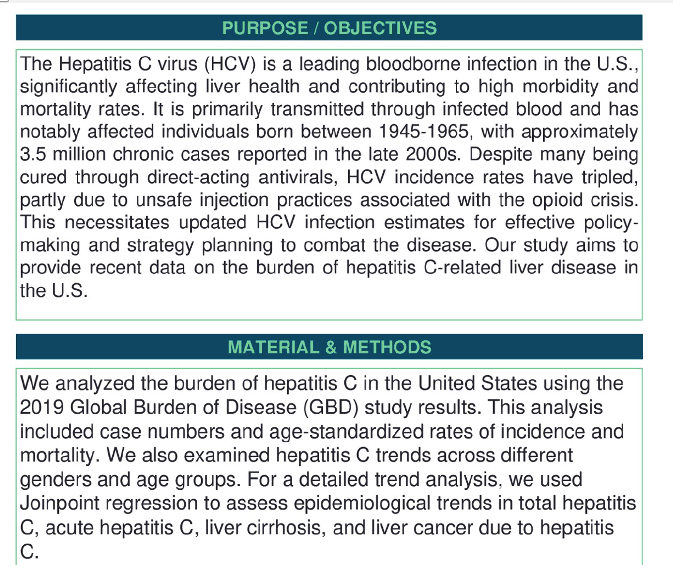
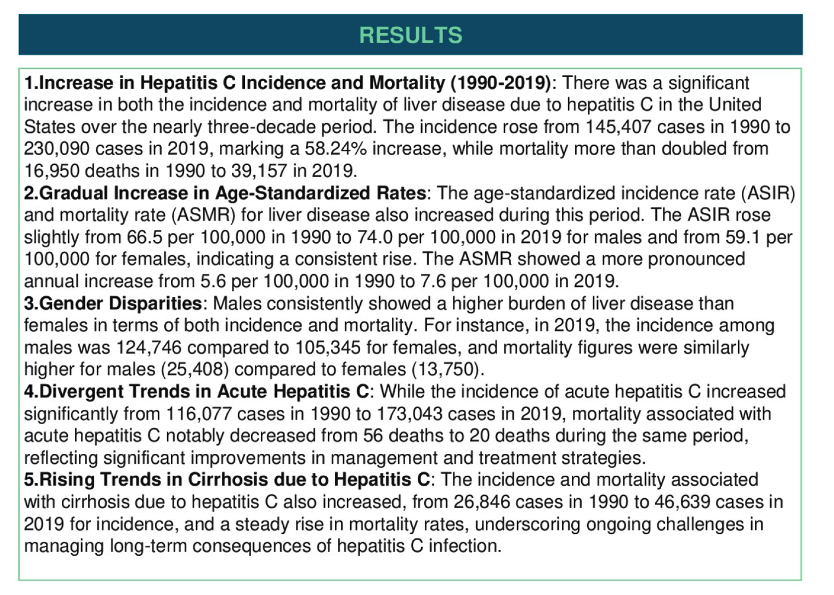
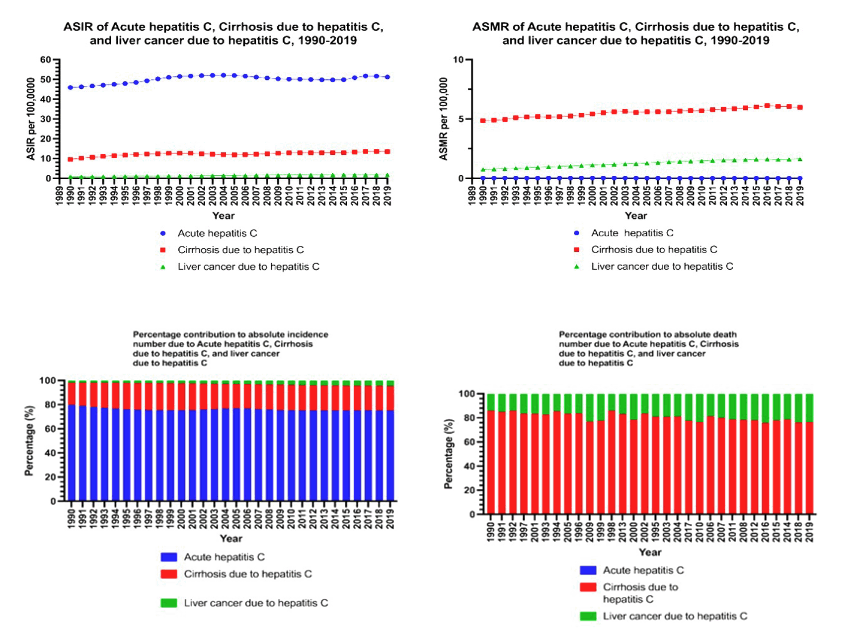
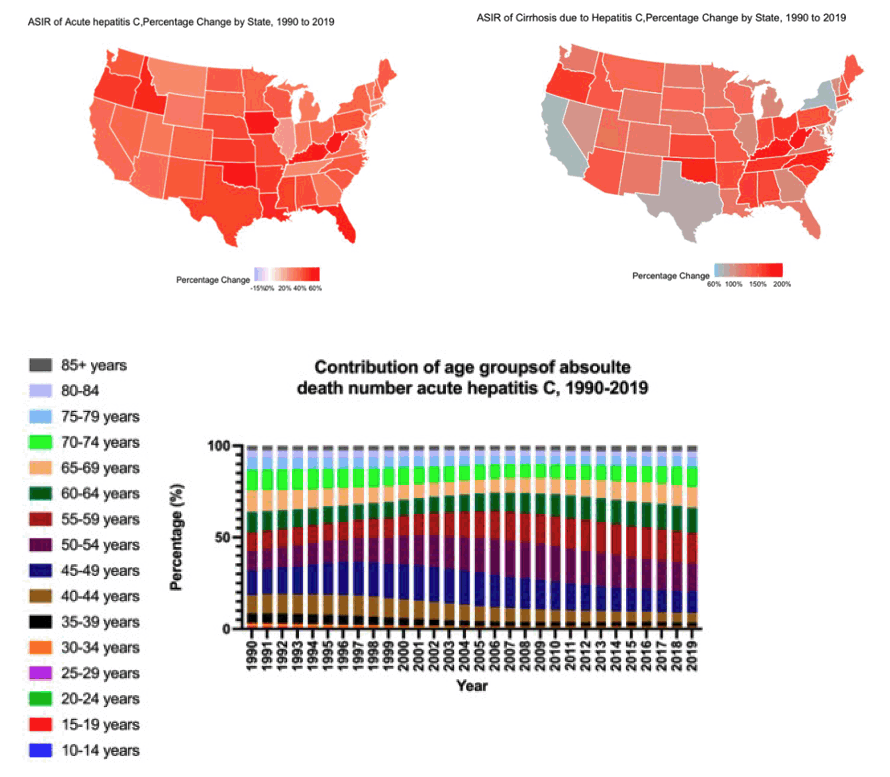
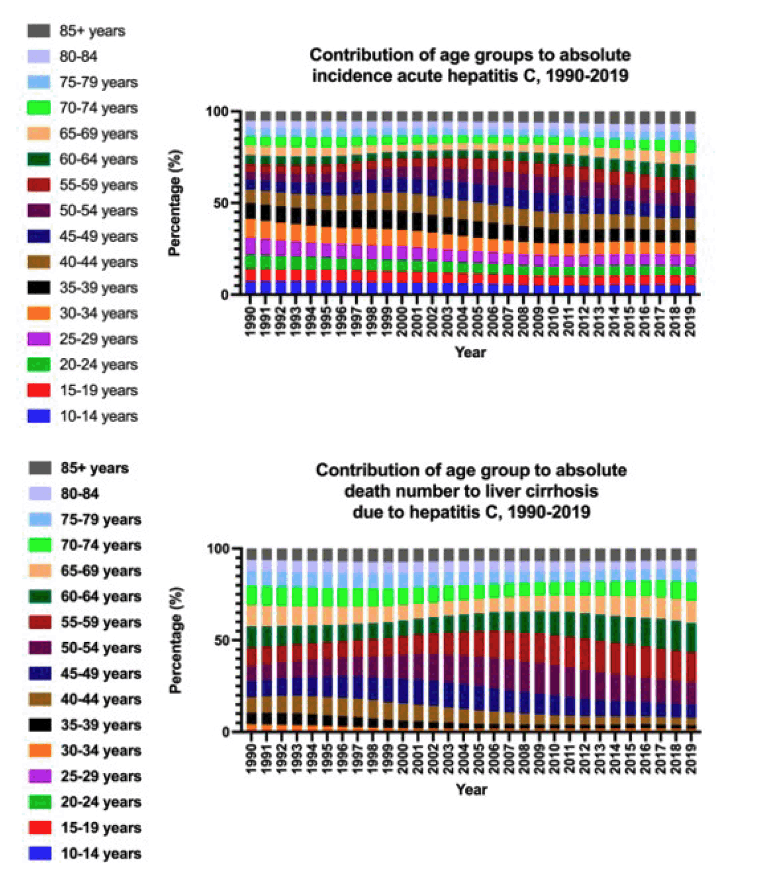
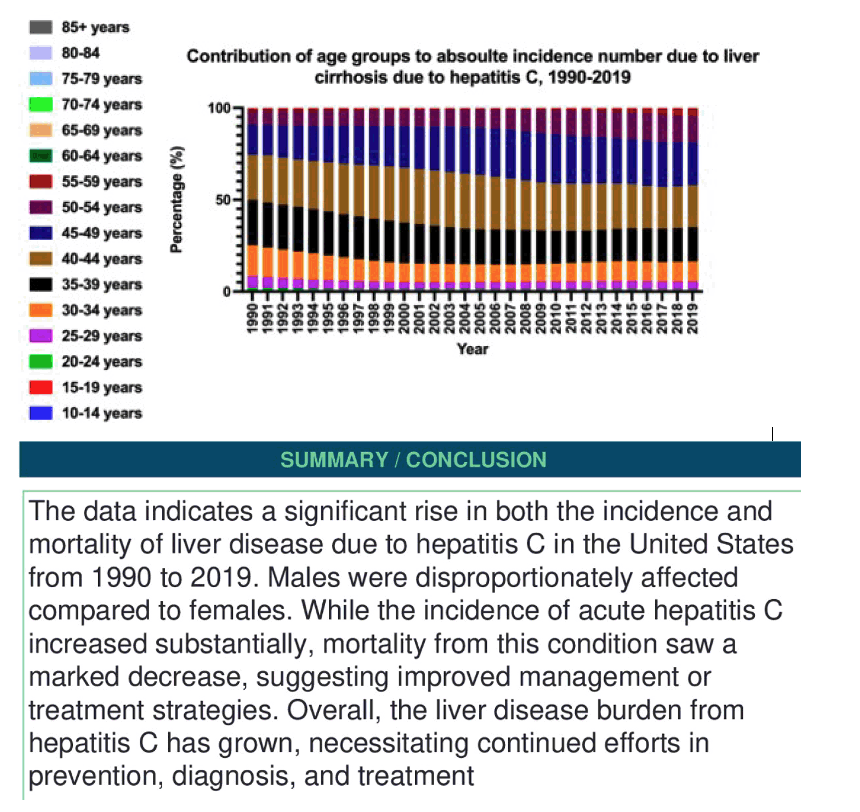
|
| |
|
 |
 |
|
|